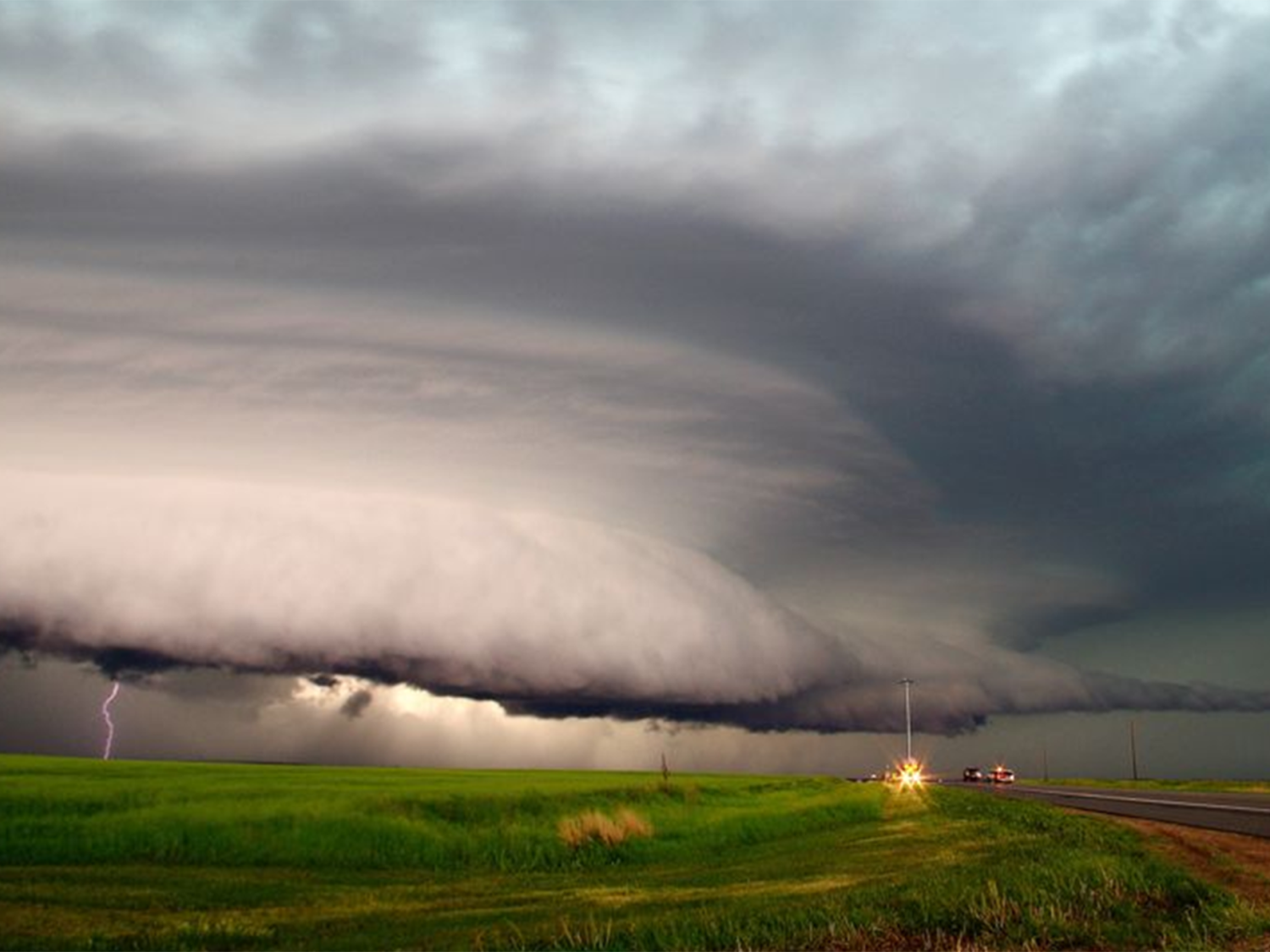In 2020, a series of severe thunderstorms brought forth formidable winds, resulting in billions of dollars in damages throughout the Midwest United States. A method devised by scientists at Penn State, which integrates satellite data, shows promise in enhancing forecasts for such severe weather events, potentially pinpointing areas most susceptible to the strongest winds.
 A technique developed by Penn State scientists could improve forecasts, such as predicting where the most powerful winds will occur during weather events like this thunderstorm in Nebraska. Image Credit: National Oceanic and Atmospheric Administration
A technique developed by Penn State scientists could improve forecasts, such as predicting where the most powerful winds will occur during weather events like this thunderstorm in Nebraska. Image Credit: National Oceanic and Atmospheric Administration
Researchers revealed that incorporating microwave data gathered by low-Earth-orbiting satellites into current computer weather forecast models resulted in improved predictions of surface gusts during a case study of the 2020 Midwest Derecho. Derechos, known for their destructive winds, are lines of severe thunderstorms. The study was published in the journal Geophysical Research Letters.
The computer model is able to produce a series of forecasts that consistently emphasize the most powerful storms and strongest wind damage at where it happened. If we have this kind of information in real time, before the events occur, forecasters might be able to pinpoint where the strongest damage is going to happen.
Yunji Zhang, Study Lead Author and Assistant Professor, Department of Meteorology and Atmospheric Science, The Pennsylvania State University
The scientists highlighted that the method could be particularly valuable in regions devoid of ground-based weather monitoring infrastructure, such as radars employed in weather forecasting. Throughout the study, the researchers solely relied on data accessible through satellite observations.
In regions where there are no surface observations, or basically no radar, we show that this combination of satellite observations can generate a decent forecast of severe weather events. We can probably apply this technique to more regions where there are no radar or dense surface observations. That’s the fundamental motivation behind this study.
Yunji Zhang, Study Lead Author and Assistant Professor, Department of Meteorology and Atmospheric Science, The Pennsylvania State University
The study expands upon the team's previous utilization of data assimilation, a statistical technique striving to depict the most precise representation of present weather conditions. This encompasses minute alterations in the atmosphere, as they have the potential to result in significant disparities in forecasts over time.
In earlier research, scientists at Penn State's Center for Advanced Data Assimilation and Predictability Techniques integrated infrared brightness temperature data from the US Geostationary Operational Environmental Satellite, GOES-16.
These brightness temperatures indicate the amount of radiation emitted by objects on Earth and within the atmosphere. By employing infrared brightness temperatures across various frequencies, the scientists aimed to enhance their understanding of atmospheric water vapor and cloud formation.
Infrared sensors solely capture activity at the cloud tops.
According to the scientists, microwave sensors provide a comprehensive view of an entire vertical column, presenting fresh insights into post-storm activities transpiring beneath clouds.
Just based on the cloud tops, it’s more difficult to infer what the convection of these storms looks like underneath. So that’s one of the benefits of adding in the microwave observations — they can provide information on where the strongest convections are.
Yunji Zhang, Study Lead Author and Assistant Professor, Department of Meteorology and Atmospheric Science, The Pennsylvania State University
By integrating assimilated infrared and microwave data in the analysis of the derecho, researchers achieved improved accuracy in predicting surface gust locations and maximum wind values.
Looking ahead, Zhang expressed intentions to extend this method to areas lacking the resources and infrastructure necessary for high-spatiotemporal-resolution weather observations.
Yunji Zhang concludes, “We know that there have been several times in the past several years in West Africa where very strong torrential rainfall events have brought on a lot of precipitation to those countries. And one thing about these countries is that they are also the places that will likely be impacted most by global warming. So I think if we can use these available satellite observations to provide better forecast for those regions, it will be really beneficial for the people there as well.”
Penn State contributors to this study included professors David Stensrud and Eugene Clothiaux, along with assistant professor Xingchao Chen, all from the Department of Meteorology and Atmospheric Science.
The study was funded by NASA and the US Department of Energy.
Journal Reference:
Zhang, Y., et al. (2024). Enhancing Severe Weather Prediction With Microwave All‐Sky Radiance Assimilation: The 10 August 2020 Midwest Derecho. Geophysical Research Letters. doi.org/10.1029/2023gl106602.